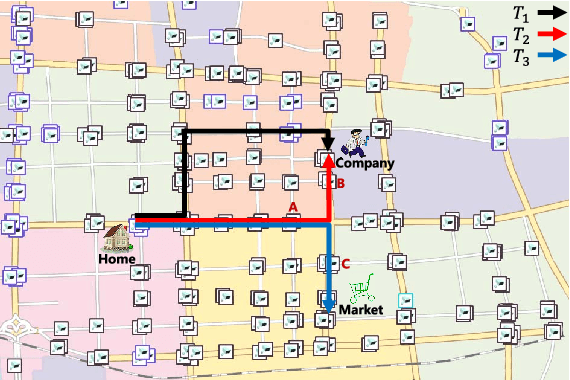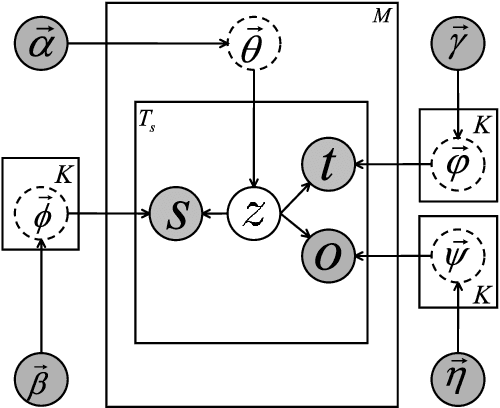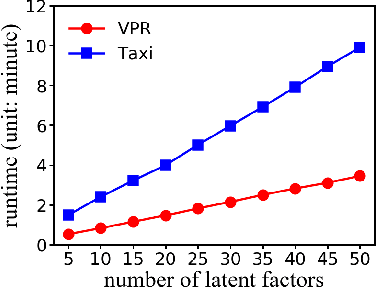TraLFM: Latent Factor Modeling of Traffic Trajectory Data
Paper and Code
Mar 16, 2020



The widespread use of positioning devices (e.g., GPS) has given rise to a vast body of human movement data, often in the form of trajectories. Understanding human mobility patterns could benefit many location-based applications. In this paper, we propose a novel generative model called TraLFM via latent factor modeling to mine human mobility patterns underlying traffic trajectories. TraLFM is based on three key observations: (1) human mobility patterns are reflected by the sequences of locations in the trajectories; (2) human mobility patterns vary with people; and (3) human mobility patterns tend to be cyclical and change over time. Thus, TraLFM models the joint action of sequential, personal and temporal factors in a unified way, and brings a new perspective to many applications such as latent factor analysis and next location prediction. We perform thorough empirical studies on two real datasets, and the experimental results confirm that TraLFM outperforms the state-of-the-art methods significantly in these applications.
 Add to Chrome
Add to Chrome Add to Firefox
Add to Firefox Add to Edge
Add to Edge